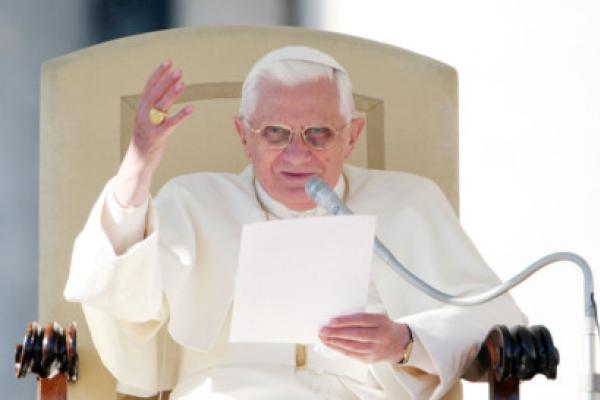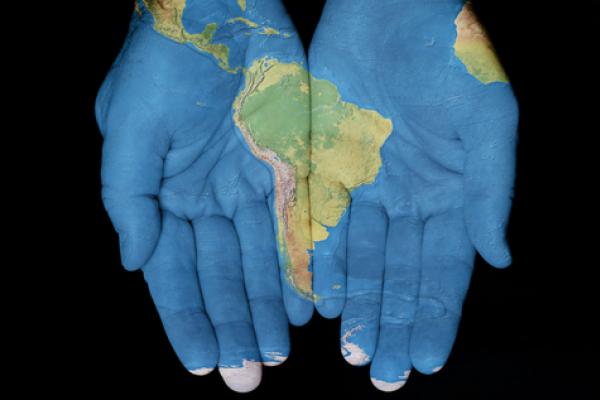While we have been focusing on drones as weapons of war – killing by drone – controversy over the domestic use of drones is also growing. Police forces across the U.S. have become enamored by surveillance drones that can be used in law enforcement. But that has led to a rise in local governments beginning to strictly regulate their use or banning them. The New York Times reports on these efforts:
“To me, it’s Big Brother in the sky,” said Dave Norris, a city councilman in Charlottesville, Va., which this month became the first city in the country to restrict the use of drones. “I don’t mean to sound conspiratorial about it, but these drones are coming, and we need to put some safeguards in place so they are not abused.” … Last week, the Seattle Police Department agreed to return its two still-unused drones to the manufacturer after Mayor Michael McGinn answered public protests by banning their use.”
Some states have adopted moratoriums on drones pending further study, others are considering proposals that would require search warrants for their use. It is heartening that the objections are coming before drones are flying over all of us, rather than attempting to stop them when it is already too late.
VATICAN CITY — As of 8 p.m. on Feb. 28, Pope Benedict XVI will no longer be pope and the Vatican will go into “sede vacante” mode — a Latin expression that means that the seat of St. Peter is vacant.
So who’s in charge until a new pope is chosen? The “interregnum” between two popes is governed by ancient rituals and by institutions half forgotten even within the Vatican.
But it is also the only time that the Catholic Church comes close to vaguely resembling a democracy, with the College of Cardinals acting somewhat like a Parliament with limited powers as it prepares to choose the new pontiff in a closed-doors conclave.
When Cardinal Joseph Ratzinger was elected Pope Benedict XVI in 2005, the surprising choice cast a pall over the liberal wing of the flock and left conservatives giddy with the prospect of total victory. Ratzinger had for decades served as the Vatican’s guardian of orthodoxy, the man known as “God’s Rottweiler,” and his vocal fans were crowing about the glorious reign to come.
“He’ll correct the lackadaisical attitudes that have been able to creep into the lives of Catholics,” the Rev. M. Price Oswalt, an Oklahoma City priest who was in St. Peter’s Square that April day, told The New York Times. “He’s going to have a German mentality of leadership: either get on the train or get off the track. He will not put up with rebellious children.”
Now, however, with Benedict set to leave office eight years later in an unprecedented departure, many on the Catholic right are counting up the ways that Benedict failed them, and wondering how their favorite watchdog turned into a papal pussycat.
As the 117 Roman Catholic cardinals walk into the Sistine Chapel next month for the election of a new pope, one hopes that they fully recognize the unfolding, dramatic pilgrimage of world Christianity: The demographic center of Christian faith has moved decisively to the Global South.
Over the past century, this astonishing demographic shift is the most dramatic geographical change that has happened in 2,000 years of Christian history. Trends in the Catholic Church — comprising about 1 out of 2 Christians in the world — have generally followed this global pattern:
- In 1900, about 2 million of the world’s Catholic faithful lived in Africa; by 2010, this had grown to 177 million.
- 11 million Catholics were found in Asia in 1900; by 2010 there were 137 million Asian Catholics.
- Through colonial expansion, 59 million Catholics populated Latin America and the Caribbean in 1900; but by 2010, that number had grown to 483 million.
- In 1900, two-thirds of the world’s Catholic believers were in Europe and North America; today, two-thirds are in Latin America, Africa, and Asia.
When disgruntled congregations have left hierarchical denominations such as the Episcopal Church, they’ve often lost property battles as civil courts ruled buildings and land are not theirs to keep.
But outcomes could be different this year, court watchers say, as high-profile cases involving dozens of Episcopal congregations in South Carolina and Texas wind their way through state courts. That prospect has observers watching for insights that could shape legal strategies in other states and denominations.
Both cases involve conservative dioceses that voted to leave the Episcopal Church over homosexuality, among other issues. In South Carolina, congregations representing about 22,000 people are suing the Episcopal Church for control of real estate worth some $500 million and rights to the diocese’s identity. In Texas, the national Episcopal Church is suing about 60 breakaway congregations in the Fort Worth area for properties estimated to be worth more than $100 million.
Just as the winter months tend to bring a mellower, melancholic feel to life, so too can music. And some of this month’s more obscure releases do just that. If you’re looking for an album to check out on a dreary winter morning, look no further.
That’s not to say at all that they’re bad releases. One can quickly point to the likes of Bon Iver or Radiohead as figureheads of melancholy. They’re just different from the bubbly pop one might hear a lot on the radio.
I awoke in the middle of the night last evening and walked the house in the dark. Kenneth and Caitlin were still stirring, as the older children sometimes do on the weekend. As I climbed the stairs back to our room I felt a wave of gratitude.
Here we are all under one roof for who knows how much longer, yet such a privilege to still be together even as four of seven attend college and work hard and make us proud as they figure out what's next.
I got back into bed and Debbie put her arm around me in her sleep. I said "I love you," and she whispered, half-asleep "I love you, too," and for that moment all was well, and I had a sense that all would be well in the future, come what may.
As I lay there in the stillness, an encounter from five years ago came back to me in vivid color. I had just preached the funeral of a man taken unexpectedly following a routine surgery. I was at the wake afterward and sat next to an unassuming man in his mid-50s whose suit was impeccable and whose polite manners suggested a quiet grace and a bearing of humility in his obvious accomplishments, but also a bit of world-weariness.
The U.S. killing by drones in countries other than war zones is run by the CIA. This leads to the secrecy of the program, one of its controversial aspects. Now, according to Ken Dilanian in the Los Angeles Times, it may change.
“Facing growing pressure to lift the veil of secrecy around targeted killings overseas, the Obama administration is considering shifting more of the CIA's covert drone program to the Pentagon, which operates under legal guidelines that could allow for more public disclosure in some cases. John Brennan, whom President Obama has nominated to run the CIA, favors moving the bulk of drone killing operations to the military, current and former U.S. officials say.”
Some think this would result in less secrecy, as the Pentagon has already acknowledged its use of drones. Others think it would prove more difficult in causing problems for nations that secretly host U.S. drone bases. Whatever the perceived problems may be, if a change leads to a more open and accountable program, it’s a good thing.
Remember those who are in prison, as though in prison with them, and those who are mistreated, since you also are in the body. — Hebrews 13:3
Where are defendants, who have committed no atrocious crimes, denied due process, shackled en masse before a judge, and sentenced during a trial of assembly-line justice? The answer: the daily proceedings in the federal courthouses of Tucson, Ariz., and a few other border locations. But anti-immigrant masterminds in Arizona did not think up this “zero tolerance” program. It is the result of powerful lobbying by private prison companies and our political willingness to harshly criminalize unauthorized migration.
Operation Streamline began in 2005 in Texas and 2008 in Arizona as part of the deterrence strategy of border enforcement. Instead of the typical civil violation, it charges people who cross the border without authorization with criminal misdemeanors (punishable by up to six months in federal prison) and then felonies (punishable 20 years) to those who return after a past deportation. Sen. John McCain, (R - Ariz.) has proposed an expansion of the program as part of immigration reform.
But according to a recent report, the federal government already has spent an estimated $5.5 billion incarcerating undocumented immigrants in the criminal justice system for unauthorized entry and re-entry since 2005. Unauthorized entry/re-entry have recently become the two most prosecuted crimes in the entire federal judicial system. Consequently, Latinos now represent more than 50 percent of all those sentenced to federal prison despite making up only 16 percent of the U.S. population.








